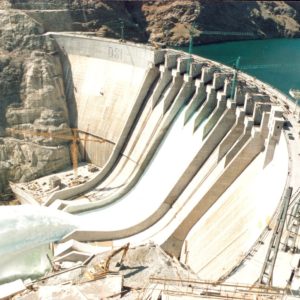The Stream, July 26: Global Infrastructure Spending Not Enough To Meet SDGs, Report Finds
The Global Rundown
The world will need to increase its rate of infrastructure investment to meet goals set for water, sanitation, and electricity access by 2040, according to a new report. Australia is investigating nearly 100 sites that may have been contaminated with PFAS chemicals. The cholera outbreak in Yemen appears to be turning a corner as the rate of fatalities drops. Some communities in the western United States are creating 100-year water plans to prepare for climate change. A changing climate in Europe could put more power plants at risk of water shortages, a study found. A project in Kibera, Kenya aims to clean up a polluted reservoir for commercial use.
“In general I think it’s wise to be looking well ahead in the future. It’s also true that there is a great deal of uncertainty as to what the demand for water will be in 100 years, what the effects of climate change might be, and really, what sort of changes there might be to the whole legal framework as for how water is managed.” –Tony Pulokas, a developer and senior engineer at HydroLogics, referring to century-long water plans being developed by some communities in the western United States as they prepare for climate change. (News Deeply)
By The Numbers
94 sites Number in Australia that are being investigated for contamination with PFAS chemicals, which have been linked to cancer. The chemicals were used in firefighting foam at military sites and airports, and have since contaminated water resources. Guardian
In context: Nonstick chemicals slipped into water, causing health, environmental, and regulatory mess.
400,000 cholera cases Number reached in the outbreak in Yemen Tuesday, though the rate of infections and deaths appears to be declining. Reuters
Science, Studies, And Reports
Global spending on infrastructure will need to reach $97 trillion by 2040 to meet growing urban demands as well as the global Sustainable Development Goals, according to a report released by the Sydney-based Global Infrastructure Hub. The report estimates that $5.8 trillion is needed to meet the SDGs for water, sanitation, and electricity by 2030, and that so far rates of investment are insufficient to reach the goals. Global Infrastructure Hub
In context: America’s water infrastructure requires new mindset.
Power plants in 54 water basins in Europe could experience cuts in productivity by 2030 due to cooling water shortages, according to a study published in the journal Nature Energy. To avoid power interruptions, the researchers called for an increased focus on jointly developing comprehensive water and energy management plans. Ars Technica
On The Radar
A project in Kibera, Kenya, a slum near Nairobi, aims to clean up one of the city’s dams that has been polluted beyond use. The project will employ local residents to collect recyclable trash clogging the dam, eventually making the reservoir usable by businesses such as laundries and car washes. Reuters
A news correspondent for Circle of Blue based out of Hawaii. She writes The Stream, Circle of Blue’s daily digest of international water news trends. Her interests include food security, ecology and the Great Lakes.
Contact Codi Kozacek





